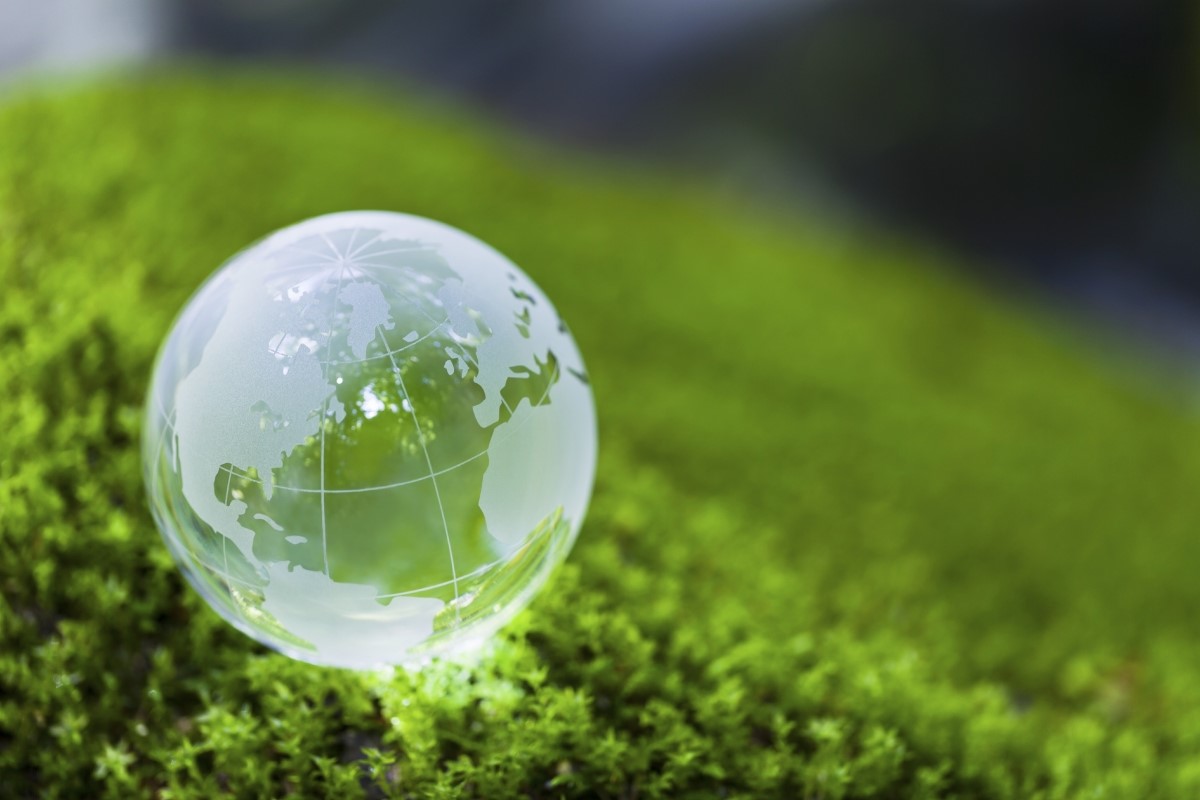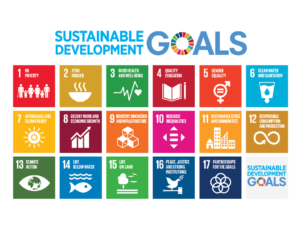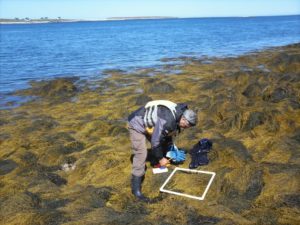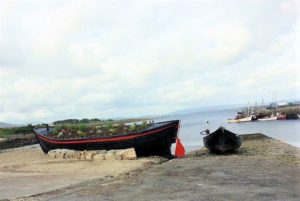News and Blog

The 3 Secrets to Our Sustainable Business Management Success
If you speak with some people, you might be led to believe ideas like commerce or capitalism have no place in the same sentence as conservation or community. In our experience, that couldn’t be further from the truth. From the very beginning, Acadian Seaplants has maintained a balance where commercial interests, local communities and rich ecosystems achieve a win-win-win scenario. Today, more organizations are coming around to this way of thinking.
Consider the United Nations’ decision to embrace this mindset with their 17 Sustainable Development Goals (SDG). Their ambitious objective to end poverty by creating a balance between economic development, social responsibility and environmental stewardship is one that speaks to our business. But is it too tall of an order? Not if corporations and governments work together to build sustainability into the fabric of who they are.

Our founder and my father, Louis Deveau, understood how every business decision impacted the residents and natural resources of the regions where we operated, taking firm action to ensure the long-term sustainability of both. That’s not just part of our legacy, but a living part of our present. Our flagship products for crop production contribute to sustainable agriculture, which helps with the UN’s zero hunger project as well as Europe’s Green Deal goals. In fact, here’s how we continue to include and improve our sustainable business management practices in all we do.
The Environment
The seaweed we harvest to make our value-added products is a world unto itself, complete with fish, crabs, sea urchins, birds and other animals living and feeding amid its shelter. Anyone who has traveled the coastal waters where we operate will tell you: From the Bay of Fundy area in Atlantic Canada and Maine, USA to the Atlantic waters along the coasts of Ireland and the Outer Hebrides in Scotland, these natural spaces must be preserved.
Our seaweed harvest leaves none of this important preservation to chance. We assembled a technical team under the guidance of Dr. Raul Ugarte, the foremost technical expert on seaweed resource management, to scientifically monitor the influence our practices and operations have on seaweed and its surrounding ecosystem. Our marine scientists travel the Atlantic shores around the world and use state-of-the-art technology to examine the health of the Ascophyllum nodosum biomass on an all-encompassing scale.

Through seaweed resource assessments, we’ve developed a sustainable seaweed harvest that takes less than 25% of the standing stock, allowing populations to flourish. What have we learned from all this activity? Seaweed grows back each year when well-managed harvesting leaves the holdfast and sufficient plant material to do so. With our careful stewardship, we’re ensuring this natural resource remains for the enjoyment of countless generations.
Our Communities
How successful would we be without the trust and blessing of the communities where we harvest and process our seaweed? From what I’ve seen, businesses can earn both through their consistent actions by honouring the way things are done there and by the introduction of methods that can make their work easier and more rewarding. One way to gain trust is by being a benefactor of your community, helping to create, in the words of UN SDG 8, “sustained, inclusive and sustainable economic growth [with] full and productive employment and decent work for all.” That’s been a conscious commitment and integral part of our community-minded business from the start.
In the rural communities where we often operate, people are accustomed to the boom and bust of traditional industries. A town takes shape around an abundant resource and then, due to unfortunate management or a finite supply, the people struggle when the work dries up. It’s a story you’ve heard hundreds of times in the news. However, the way we do business prevents this cycle, offering long-term economic gain through our sustainable seaweed harvest and operations.
Those who participate in the harvest find reliable work during the harvesting season, whether it’s to supplement their earnings or to make a flexible living on their terms. In places like Nova Scotia and New Brunswick in Canada, we’ve built relationships with lobster fishers, providing work during the off season to supplement their living.
That doesn’t even begin to account for the jobs we create through our seaweed processing facilities. Creating value-added products for destinations all over the globe requires hard-working and innovative engineers, quality assurance specialists, factory operators and other team members to bring consistent and quality raw materials from the shores to the shelves of our customers. With our land-based seaweed cultivation in Charlesville, N.S., or our Craigie Research Center in Cornwallis, N.S., we bring well-paid work that improves the quality of life for local residents – and provides spin-off economic benefits to all members of those communities.
More than just jobs, we invest back into our home communities. Everywhere we harvest, we evaluate the current conditions of vital infrastructure, repairing and renovating the piers and roadways leading to and from our facilities. Sometimes, we make an investment in the local community to brighten the view or preserve a worthwhile piece of history. Our Arramara beautification project a few years back added a personal and welcoming touch to the pier at Cill Chiaráin, located in the Connemara district of western Ireland, that celebrated the region’s rich marine heritage and our commitment to remaining a contributing part of it.

Our Operations
This is one area businesses struggle with the most. For those looking to comply with UN SDG 12 and “ensure sustainable consumption and production patterns,” reducing carbon footprints can be a great place to start. At Acadian Seaplants, we’re always looking for innovative solutions to reduce our greenhouse gas emissions.
Recently, we partnered with Nova Scotia innovators to study whether wood chips remaining from a local pulp and paper mill that closed down could be used to generate steam as a source of renewable energy. If the pilot study is successful, we plan to provide land on our Cornwallis location for them to set up and run their operation, providing our plant with a renewable source of energy in the process.
At our Uist Asco facility in North Uist of the Hebrides, we maintain two Renewable Heat Incentive (RHI) compliant burners using wood chips that help us dry seaweed that is in line with our effort to achieve net-zero processing. We’re also working to procure and commission a new seaweed dryer that is 50% more energy efficient than our traditional dryer.
We’re always looking for ways to minimize our packaging, improve efficiencies and produce our value-added products with fewer resources along the way. By automating processes in a sustainable way, we extend our output while ensuring more high-quality seaweed makes it through the manufacturing process to our end consumer.
Following Your Values at Every Turn
Though you can see sustainable business management is a balancing act, it’s an easy choice when you acknowledge the way your business plays a part in the prosperity and wellbeing of people, the economy, communities, ecosystems and the planet. Even with our head start on the U.N.’s Sustainable Development Goals, we’re always finding new ways to do better and advance our positive impact. As we continue to build our success, we prove to ourselves and others that commerce and conservation can coexist.
Looking to learn about the ways our sustainable business management makes a difference? Check out our blog for the latest news about our sustainability, innovation and community engagement.
Read some good news
Related Articles
How ASL Keeps Improving Our Seaweed Resource Assessments
How ASL Contributes to the Zero Hunger Project by Boosting Plant Health
Pure Science, Hard Work & a Bit of Luck: How We Pioneered Land-Based Seaweed Cultivation
